#world religions
Text
Chinese Folk Religion: Snowy edition
Recent snow storms where I live has got me thinking: is there a deity responsible for snowfall and winter in traditional Chinese religion?
You got Frau Perchta/Holle in Germanic folklore, Yuki-Ona in Japanese Shinto folk beliefs, Skadi in Norse Paganism, and Morana in Slavic mythology, but I haven't ever heard of such a figure from my elders growing up.
So for this one, I had to actually use my limited Mandarin skills to do research, along with some help from more fluent family members and friends.
It turns out there are more than one traditional winter & snow deities in Chinese folklore. The reason I personally didn't hear of any is because, again, Chinese folk religion is extremely regional. There are central major deities that are uniform but the rest all differs from region to region. Han Chinese people have always spread out across several climate zones, from tropical to sub-arctic. Understandably, Gods and Goddesses associated with weather will differ from region to region. My Chinese side of the family hailed from a region where snowfall isn't very common, and winter isn't normally extreme. But look towards regions north of the Yellow River, and it's more upstream valleys in the Han Chinese heartland, it's a different story.
Teng'Liu: The Spirit of Snow and Frost
The first deity I can find is a figure named Teng'Liu (藤六). This is a male deity associated with snow itself. The "Liu" part if his name is the Chinese character for 6. Snowflakes typically have six arms/branches regardless of pattern. In Chinese numerology, the number 6 is also a number with "extreme Yin energy" (极阴). Snow itself is a thing with a lot of Yin energy too, as it's formed from water. Those familiar with Chinese cosmology should be familiar with the element's association with the cardinal direction of North. Which, again, is attributed with Yin. Thus explains why many forms of his folk names contains the number 6.
There is a folk ritual (which thankfully hasn't been practiced in over a century), which in Northern villages they used to offer up a young girl to this snow deity as a gift to appease him. The unfortunate girl would be tied up in a sack and left to the elements in the cold.
Teng'Liu occurs often in poetic works of literature as a stand-in for "snow". A fitting example is a work from Song dynasty writer and poet Yang Wanli, where he mentions "The Azure Lady pulls along Teng'Liu, as the Sun wilts away as she shakes (him)"** The meaning is obvious, but he mentions an Azure Lady, which takes us to another deity.
Qing'nu (青女): The Azure Lady
The second deity associated with snow and winter is a Goddess called Qing'nu, or "The Azure Lady", "The Lady in Turquoise", "The Lady in Blue", depending on the translation. She seems to be much more well-attested in ancient religious texts in addition to poetry and seems to predate the emergence of Teng'liu.
Attested in Huainanzi, a text compiled around 139 BC, "...three moons into autumn, Qing'nu emerges (from her home), and makes frost and snow fall..."
She is also mentioned as having white hair in a lot of classical Chinese poetry.
In traditional Chinese folk beliefs, Qing'nu resides in the moon and is a companion/handmaiden of the Moon Goddess Chang'E (嫦娥). Every year at the end of autumn, she will emerge from the moon palace to perform her duty: to bring winter, frost, cold, and snow. She will descend upon Mount Qing'yao (青要山), where she will bathe in the waters there to purify herself. She will then start playing her seven-stranded lyre and snow and frost will fall upon the earth to cleanse the land of impurities and diseases (until they come back next summer).
BTW Mt. Qing'yao is an actual mountain in Henan Province. The mountain itself does play a rather big role in traditional beliefs and in Taoism. In fact, there is a hill adjacent to the mountain named Qing'nu's Peak (青女峰), where on the peak there stands a pillar-like rock. In local folklore they say that lone pillar looks like a slender lady, standing atop the mountains looking down upon the earth. It marks where the Goddess herself stands every year to bring winter. The locals call it "the maiden's rock" (闺女石).
Legend has it there was once a gorgeous palace at the foot of this mountain where Qing'nu would stay in temporarily during winter. This could possibly be a reference to some type of structure used as a shrine or temple. Today only the spring that flowed in the palace remain. The very spring that, according to folklore, that the Goddess herself bathes in to purify herself. Today, young ladies from around would make pilgrimage to that spring to welcome her arrival on 14th day of the ninth month. A second pilgrimage would also be made on 13th day of the third month as she is supposed to leave and return to the moon. (the dates are the dates in the Chinese lunar calendar).
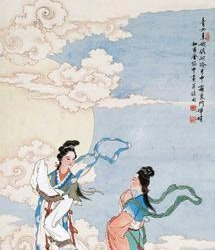
From these we can see while those deities are all associated with snow, they are seen by the people as very different. Teng'liu is very embodiment of the weather phenomenon, kind of like Jack Frost in American folklore. The fact there were rituals to appease him means that he is seen as a very unpredictable and volatile force. A spirit which has to be controlled under strict orders from a higher Celestial deity (天神): Qing'nu. Think of her as the Chinese counterpart to Frau Holle, a spirit attributed to making snow fall but not the snow itself. Or rather, think of those two like Helios and Apollo in Greco-Roman mythology. One being the sun itself and the latter being the one who pulls the sun across the sky.
This was fun, i hope all you folks who are trying to connect to their ancestral beliefs found this useful.
**translation might be off, sorry. Middle Chinese is difficult even for fluent speaker who studies old literature, plus this was Middle Chinese in it's poetic form.
#chinese folk religion#folklore#chinese folklore#history#ancestors#witchblr#witches of color#han chinese#chinese diaspora#folk taoism#chinese mythology#chinese religion#folk religion#polytheism#world religions
52 notes
·
View notes
Text
I always find it funny when people try to reduce one of the big world-religions to like... One ethnicity. They're not called "world religions" for nothing.
Even within their history, they are showed to evolve. Buddhism was born and created in India - and yet today its leading countries are China and Japan, and it is a minor, secondary religion in its own birth-country. Same thing with Christianity, which might have grown in power and importance in Europe, but was originally a religion from what we call the Middle-East.
In fact about Christianity - people like to imagine it somehow as a "white religion"... Did you know that one of the oldest branches of Christianity is the Church of Ethiopa? In fact, the Ethiopian Christianity is considered to be, to this day, the branch of Christianity that is the closest to what Christianity originally looked like, in the early days of the Church.
30 notes
·
View notes
Text


Arnadí, also known as carabassa santa ("holy pumpkin"), caramull ("brim") or cassoleta de Dijous Sant ("Holy Thursday little casserole") 🍰
It's a cake made of chestnut and pumpkin eaten during the Holy Week in some areas of the Valencia area and the Central Valencian Country.
The most widespread recipe uses toasted or boiled pumpkin, boiled sweet potatoes, lemon peel, almonds, pine nuts, egg yolks, sugar and cinnamon.
The origin of this dish is unknown, but it's documented in the area since at least the 1600s. Some food historians point that it might be related to an Amazigh (=indigenous Northern African) dish called sellou (سْلّو), tquawt (تْقاوْتْ), sfouf (سْفوفْ), zammitta (الزٌمٌيطة) or bssisse (بْسيِسْ), depending on the region, which is eaten for Ramadan.

An Amazigh sellou. Photo by picturepartners.
The sellou is made of almond, cinnamon, wheat, oil or butter, and other spices that vary depending on the region. It has the same shape as the arnadí and is also decorated with almonds.
Another noticeable similarity is that both are eaten during their religion's holy time: Ramadan for Islam and the Holy Week for Catholics. They're both very important religious celebrations based on the lunar calendar and based on fasting or restricting food (for Ramadan, Muslims can't eat during sunlight hours and, for the Holy Week, Catholics aren't supposed to eat meat and eggs and have to eat simple humble food). Both religions view it as a way of sharing compassion with poor people and to distance themselves from Earthly desires, and in the case of Christians also to get closer to Jesus' suffering. Even though most people in historically-Catholic countries don't follow these religious rules anymore, it's still common to eat the traditional dishes of the time.
To get ready for the hours of fasting or reduced food intake, both communities have the tradition of eating high-calories, high-energy dishes, such as the arnadí and sellou.
The arnadí, in its current recipe, can't date back to the Middle Ages, when the Valencian Country was conquered by Islam and received Arab and Amazigh population. The reason is simple: its main ingredients (pumpkin and sweet potato) would not reach us until after the colonization of the American continent, where these species are from. But it can be possible that arnadí/sellou was made of almond paste at the time and, centuries later, they were changed for pumpkin and sweet potato paste, which is cheaper and it turned out to taste even better.
Photos and info source: Tasta'l d'ací.
#menjar#país valencià#arnadí#caramull#carabassa santa#cassoleta de dijous sant#setmana santa#food#amazigh#ramadan#religions#world religions#cultures#culture#religion#interreligious#ethnology#ethnography#holy week
91 notes
·
View notes
Text
youtube
Today, August 11th of 2023 will complete one month my father made his passage. He was a babá, a priest of the Afro-Brazilian religion named Umbanda, where we essentially worship nature and its spirits, powers and deities, mostly called orishas.
My sister is a musician, just like he was and she paid this tribute to him with two traditional ritualistic invocation songs for the Orisha Oshun, the one who assisted him, his Mother.
I will provide the lyrics below, in Yoruba, Brazilian Portuguese and English. If you can give the video a thumbs up or a comment, it would make us both very happy.
We hope you enjoy it and that we were able to bring you some of our culture and religion to you, just like he would want it.
Osun ya mi oh
Osun sole ni fo mi
Elou odô already fun la yo
Jakunan yo ke rê e
Oxum, Mãe das Águas
Oxum está sobre mim
Senhora do rio de peixes felizes
Peixes graciados no caminho de felicidades
Oxum de Osogbô
Oxum Mãe das Águas.
Oshun, Mother of Waters
Oshun is above me
Lady of the Happy Fish River
Fishes graced the way to happiness
Oshun of Osogbo
Oshun Mother of Waters.
Iyê iyê, yêyê ô (Mãe, Mamãe)
Mother, mommy
Iyá Òsun ni ilé (A mãe Òsun está na casa)
Iyá Òsun ni ilé (A mãe Òsun está na casa) 2x
Mother Osun is in the house
Omo ni ilé okán mimo (Os filhos que estão na casa possuem um coração santo)
The children who are in the house have a holy heart.
Iyá tundè Iléshà, Iyá tundè (A mãe retornou para Ileshà, a mãe retornou).
The mother returned to Ileshà, the mother has returned.
Iye ku aabo, omi rê, yèyé o (A mãe é bem vinda, a água é sua, mãe)
The mother is welcome, the water is hers, mother.
Omo ni ilé okán mimo (Os filhos que estão na casa possuem um coração santo)
The children who are in the house have a holy heart
Iye ku aabo ìré o (A mãe é bem-vinda em Ìré)
Iye ku aabo Ijëshà (A mãe é bem-vinda em Ijëshà) 2x
The mother is welcome in Ìré
mother is welcome in Ijëshà
Iyê iyê, yêyê ô (Mãe, Mamãe) 2x
Iyê iyê, yêyê ô (Mother, Mother)
#Youtube#umbanda#african religions#afro brazilian#candomble#oshun#oxum#orisha#orixas#religion#world religions
37 notes
·
View notes
Text


I'm shakey. Just got off the phone with financial aid. I accepted an award for summer semester and registered for the required two classes. I chose two that seem like the least stressful since it will be summer and there is lots to do around here. Sociology & Philosophy 301 World Religions. Should be interesting. I'm stressed out already 😬
7 notes
·
View notes
Text
Also, the religions of my native land have been doing just fine for thousands of years with our own gods and goddesses, thank you very much.
#witches of color#religions#deities#world religions#asian religions#ancient religions#polytheism#eastern spiritualities
39 notes
·
View notes
Text

The Yoga of Sound -- Exploring Sound Meditation (Auditory Mysticism, Surat Shabd Yoga) in the Sacred Texts of the Great World Religions, Gnostic Traditions, and the Path of the Masters: https://SantMatRadhasoami.blogspot.com/2013/09/the-yoga-of-sound-exploring-sound.html
"Who else is Christ but the Sound of God?" (Acts of John, new testament apocryphal text with gnostic elements)
12 notes
·
View notes
Text
10 notes
·
View notes
Text

James Freeman Clarke, in his Ten Great Religions, describes the beliefs of the Druids as follows: "The Druids believed in three worlds and in transmigration from one to the other: In a world above this, in which happiness predominated; a world below, of misery; and this present state. This transmigration was to punish and reward and also to purify the soul. In the present world, said they, Good and Evil are so exactly balanced that a person has the utmost freedom and is able to choose or reject either. The Welsh Triads tell us there are three objects of metempsychosis: to collect into the soul the properties of all being, to acquire a knowledge of all things, and to get power to conquer evil. There are also, they say, three kinds of knowledge: knowledge of the nature of each thing, of its cause, and its influence. There are three things which continually grow less: darkness, falsehood and death. There are three which constantly increase: light, life and truth."
Excerpt from Manly P. Hall's "The Secret Teachings of All Ages"
#druids#druidism#spirituality#world religions#worship#manly p hall#readings#quotes#esoterica#mysticism#life#good and evil#knowledge#gnosis#nature#the secret teachings of all ages#art#three#symbolism#mythology#divinity#soul
61 notes
·
View notes
Link

A remarkable amount of work went into this. It allows you to scroll in and out.
14 notes
·
View notes
Text

As far as I can tell Christians, Catholics, Jews and Muslims all worship the same god/ evil demi urge (though American Christians don’t even worship god or Jesus they are actually Paulian without even knowing it :P )
They all worship revere this god/Jesus/Horus/Paul/Jahovah/Yaweh/ evil demiurge who is VERY PRO-SLAVERY AND ANTI-WOMEN...so I get to not respect them or their religion(s)
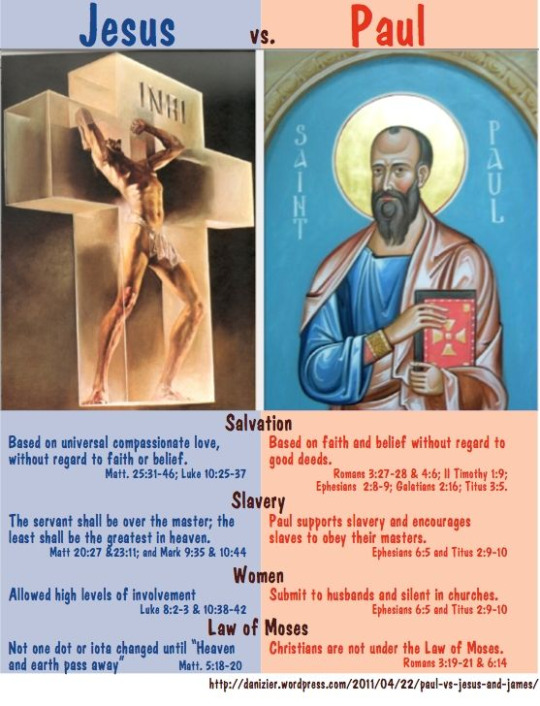
These are the only real differences between these religions that all worship the same god/ evil demiurge :

plz stop calling Jesus the prince of peace and here’s a weird thought: MAYBE your role model should NOT be someone who dies horrible paying for terrible people who hate you? ....just a thought

Hindus think I should pay for past mistakes I made in a different lifetime in THIS lifetime sometimes and should strive to be “nothing” someday, and I should revere selfish horrid careless gods/goddesses and godexes that are objectively terrible, that I should be fine if not GRATEFUL to be FORCED to have my memories taken from me within samsara ...that dosn’t respect me or anyone if you ask me...so yet again:
no I don’t have to respect ANYONE’S religious beliefs that harm me and others.
I hate waiting. I need change now.

I hate waiting. I need change now.

both Buddhism and Hinduism BOTH sound A LOT like capitalistic evil retoric that suffering and feudal systems/pyramid schemes/ the caste system are inevitable and maybe good? which they ARE NOT suffering shouldn’t be a requirement of ANY good religion!
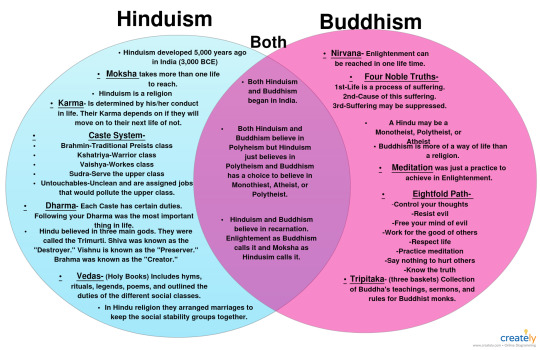
and Buddhisum is all: “ oh no! never hurt anyone or anything ever! no matter how evil, dangerous or terrible someone is! which no good person should agree with.
and most “new age” paganism goes the opposite way saying gods like Ra, Set, Odin , the Morrigin and Freya were all war-gods who didn’t kill people because they were bad usually which is messed up...they are not full of success stories either

and wiccans who say “there is no bad or evil just different perspectives”...are probably hoping you won’t realize they are indeed evil people themselves...and if they think their leader of their religion wasn’t SUPER SEXIST AND ANTI-TRANS AND INTERSEX PPL...they should do some more reading....
religion ... most of it is pretty dumb ...
#relgion#you don't actually have to#you don't actually have to respect other people's religions#world religions#religon#norse#buddishm#hindu#indian#christian#jesus#god#wiccan#pagan#magic#muslim#jewish#christ#easter#religons
7 notes
·
View notes
Text
Blessings..To the forensics anthropologists, archaeologists, and other science geeks!!
https://sanliurfa.bel.tr/icerik/226/624/gobeklitepe
#world religions#world scriptures#sacred texts#holy bible online#holy bible#forensics#anthropology#Digging for the truth
2 notes
·
View notes
Text
youtube
If you are into mysterious and folky ethereal vibes with a deep voice, listen to this song: an interpretation of Goigs de la Mare de Déu del Claustre de Solsona with a modern arrangement, by Roger Mas.
Roger Mas is a musician and singer-songwriter from Solsona, Central Catalonia. In this album, he included some traditional songs from his city. This one is a goigs (Catalan prayer songs) dedicated to the patron saint of Solsona, the Madonna of the Cloister.
Lyrics in Catalan and translation to English under the cut.
Puix tant amor ens teniu
per ser la nostra Patrona:
de la ciutat de Solsona
els vostres fills protegiu.
Since you love us so much
to be our Patron:
of the city of Solsona
protect your children.
Quan la terra a l'aspre jou
del pecat quedà lligada
per no veure-us profanada
us amaguen dins d'un pou.
Dels claustres on el teniu
tothom el títol us dóna.
De la ciutat de Solsona
els vostres fills protegiu.
When the Earth became linked
to the rough yoke of sin
in order to not see you profaned
you were hidden inside a well.
Everyone gives you the title
of the cloisters where you have it [the well].
Protect your children
of the city of Solsona.
Un dia anant-hi a jugar
un nen en ses aigües queia;
sa mare que mort el creia,
així el va sentir cridar:
mareta, no us afligiu,
que ja tinc qui ajuda em dóna,
de la ciutat de Solsona
els vostres fills protegiu.
One day, going to play there
a child fell in its waters;
his mother, who thought him dead,
heard him shout like this:
"dear mother, don't grieve,
for I already have someone who helps me".
Protect your children
of the city of Solsona.
Els monjos i els habitants,
corrent-hi tots de seguida,
encara el troben amb vida
en vostres sagrades mans.
A la imatge, que els somriu,
claror una llàntia dóna
de la ciutat de Solsona
els vostres fills protegiu.
The monks and inhabitants,
all of them quickly running there,
still found him alive
in your holy hands.
A lamp illuminates
the Image, which smiles at them.
Protect your children
of the city of Solsona.
Sens cap núvol al cel blau
un gran tro causa sorpresa,
i queda la llàntia encesa
per un llamp que del cel cau.
Aquest fet tan expressiu
el vostre poder pregona,
de la ciutat de Solsona
els vostres fills protegiu.
With no cloud in the blue sky
a great thunder causes surprise,
and the lantern remains lit
by a lightning that fell from the sky.
Such an expressive event
proclaims your power.
Protect your children
of the city of Solsona.
Puix tant amor ens teniu
per ser la nostra Patrona:
de la ciutat de Solsona
els vostres fills protegiu.
Since you love us so much
to be our Patron:
Protect your children
of the city of Solsona.
#roger mas#música#arts#solsona#music#world music#music recs#folk music#traditional music#goigs#religions#catholicism#world religions#folk culture#cultures#culture#christian music#song of the day#song recommendation#folk catholicism#Youtube#Spotify
27 notes
·
View notes
Text
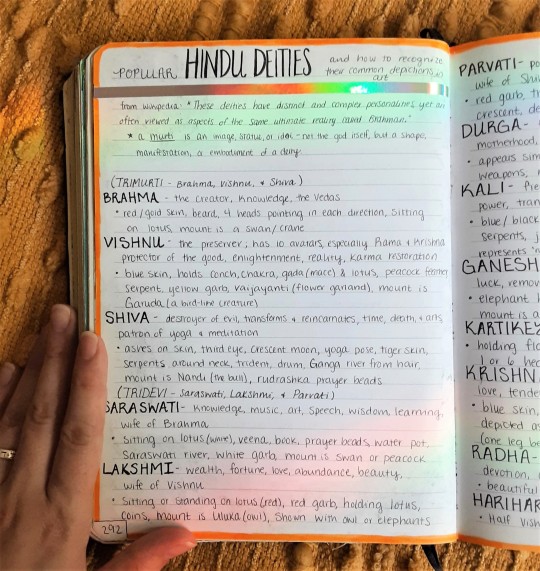
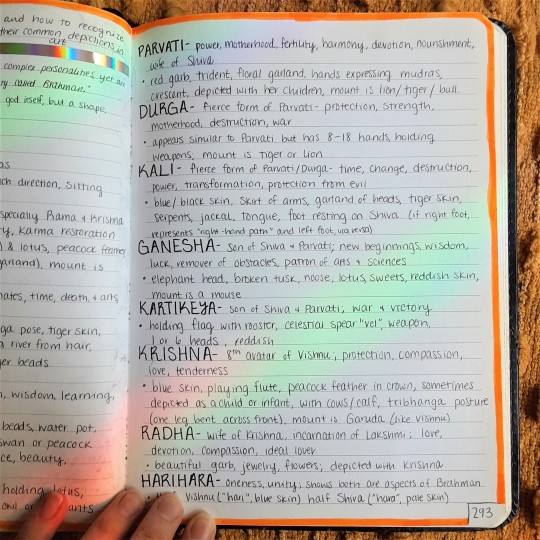

I took some notes on Hindu deities, mostly to help me identify them in religious art, which I love looking at :)
31 notes
·
View notes
Text
You are not a small star, you are a reflection of the entire cosmos. Can you hear the big bang in your heart? Eighty times a minute God knocks on the doors of your chest, to remind you that He has never left, and that He is closer to you than the jugular vein in your neck.
“Indeed, ˹it is˺ We ˹Who˺ created humankind and ˹fully˺ know what their souls whisper to them, and We are nearer to him than his jugular vein.” - The Holy Quran [50:16]
#spiritual quotes#life quotes#life reminders#purpose quotes#find your purpose#turn to god#god quotes#one god#true religion#world religions#hinduism#christianity#buddism#islamic quotes#change your life#higher thinking#meaning of life#life advice#wise words#word of advice#sign from god#heart quotes#human body#seek the lord#seek the truth#truth quotes#something to remember#depression advice#mental health advice#positivity
10 notes
·
View notes